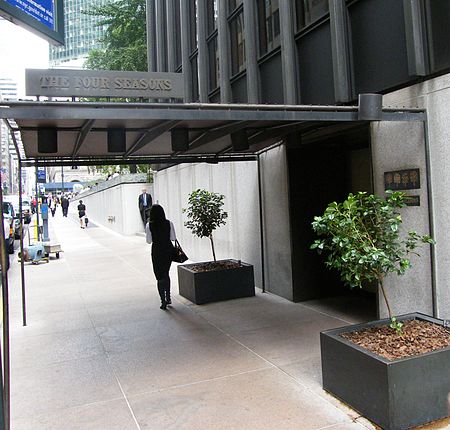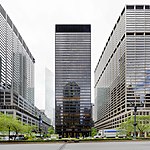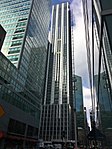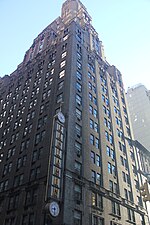The Four Seasons Restaurant

The Four Seasons was a New American cuisine restaurant in New York City. Established in 1959, it was located at 99 East 52nd Street, in the Seagram Building in Midtown Manhattan, until 2016. From 2018 to its closure in 2019, it was located at 42 East 49th Street in Midtown Manhattan. The restaurant was owned by the Bronfman family, Alex von Bidder, and Julian Niccolini at the time of its closure. The Four Seasons is associated with a number of milestone firsts in the hospitality industry. The Four Seasons is credited with introducing the idea of seasonally-changing menus to America, and was the first destination restaurant to print its menus in English. The restaurant was widely praised, winning the James Beard Award many times. The restaurant's interior, which was designed by the building's architects Ludwig Mies van der Rohe and Philip Johnson, remained almost unchanged since construction in 1959. Art inside the restaurant included paintings by Mark Rothko; a permanent mural by James Rosenquist; a major Richard Lippold sculpture; a curtain designed by Pablo Picasso; and temporary exhibitions that included works by Joan Miró, Frank Stella, Ronnie Landfield, Robert Indiana, and Richard Anuszkiewicz. The restaurant's interior was designated by the New York City Landmarks Preservation Commission as an interior landmark in 1989.
Excerpt from the Wikipedia article The Four Seasons Restaurant (License: CC BY-SA 3.0, Authors, Images).The Four Seasons Restaurant
East 52nd Street, New York Manhattan
Geographical coordinates (GPS) Address Website External links Nearby Places Show on map
Geographical coordinates (GPS)
| Latitude | Longitude |
|---|---|
| N 40.758055555556 ° | E -73.972083333333 ° |
Address
Four Seasons
East 52nd Street 99
10152 New York, Manhattan
New York, United States
Open on Google Maps










